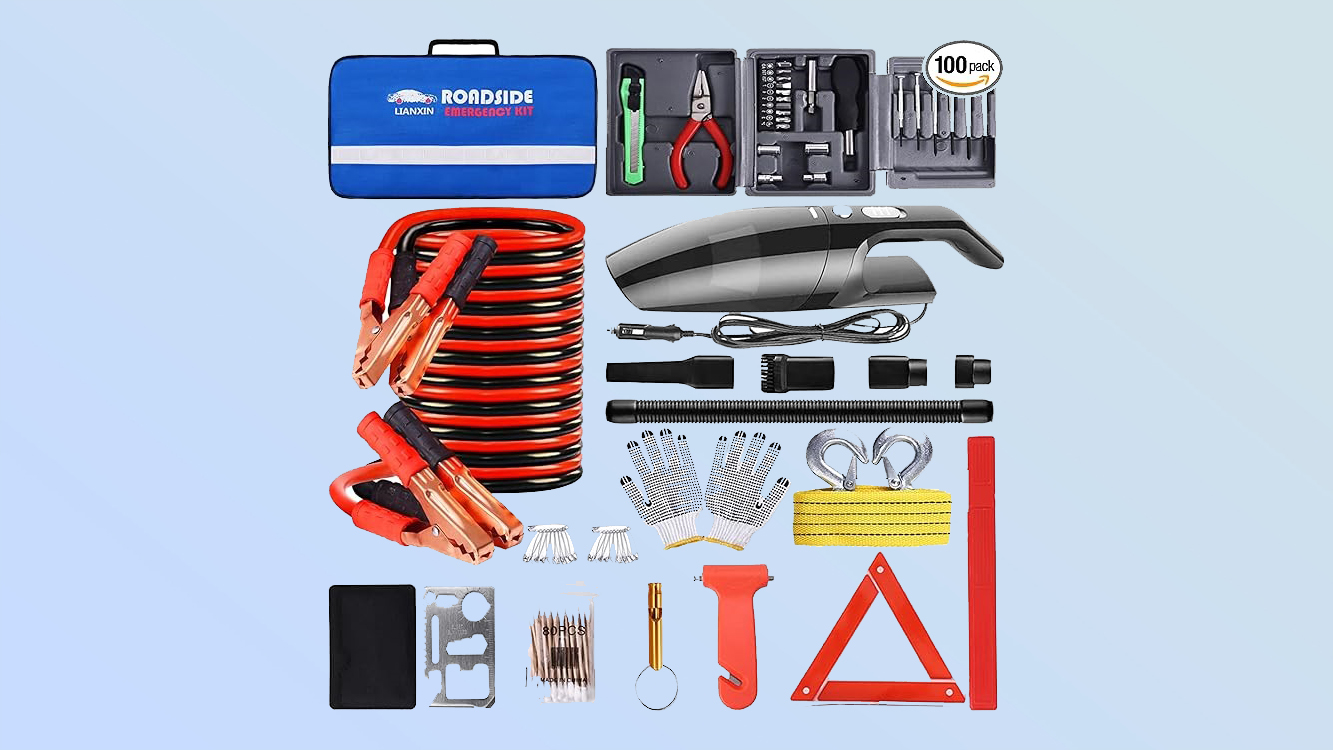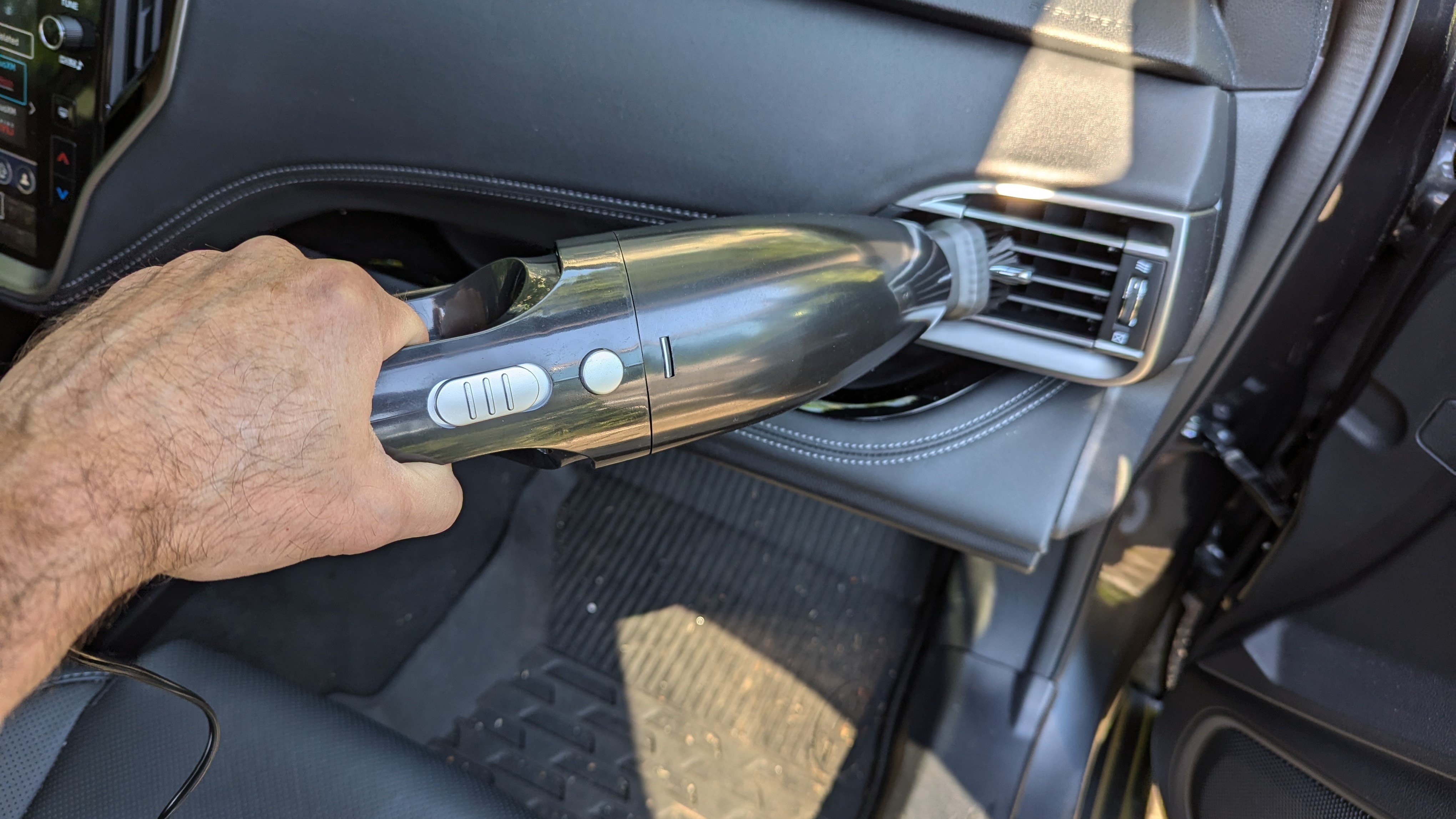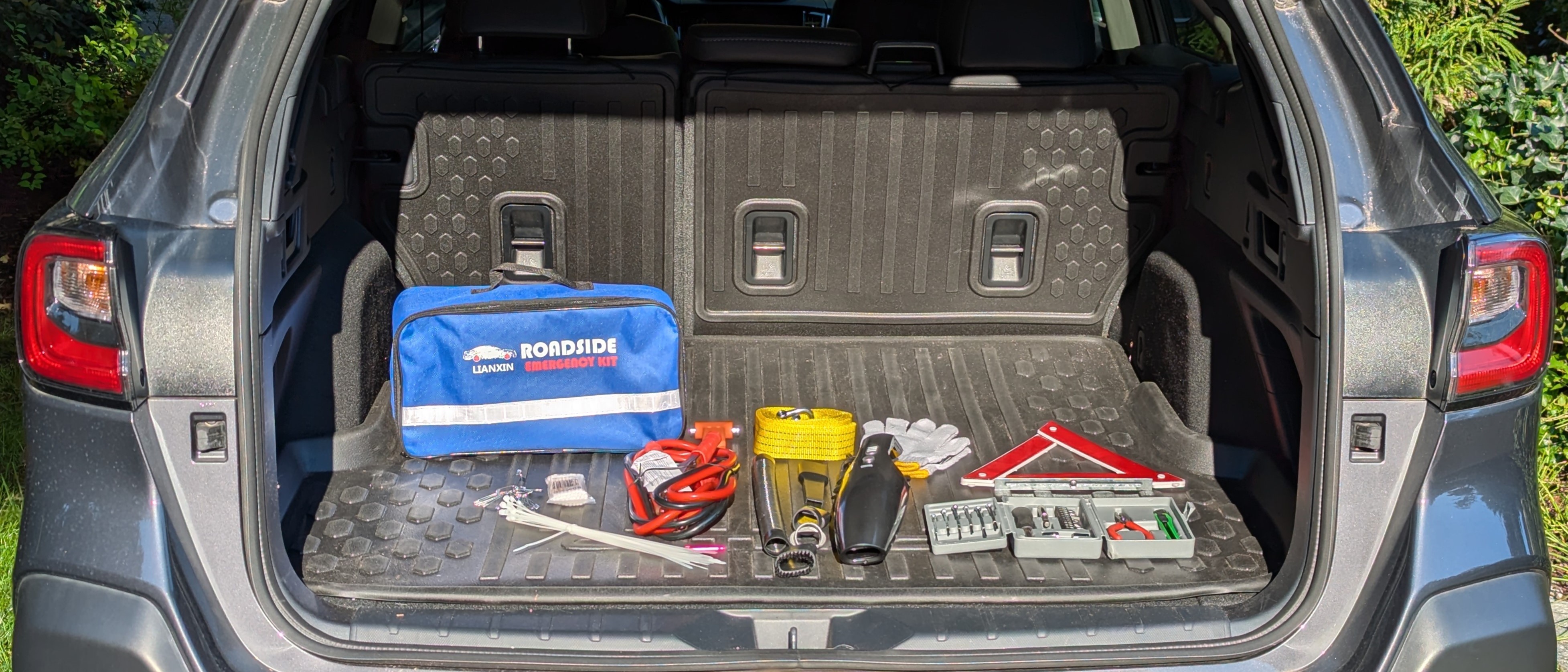Tom's Guide Verdict
With a toolkit, tow rope and jumper cables, the Lianxin Roadside Car Emergency Kit does the basics well but lacks some safety essentials, like a fire extinguisher, first aid kit and flashlight. Still, it has a vacuum cleaner and at $39, making it a bargain for compulsive cleaners.
Pros
- +
Includes vacuum, flexible tube and cleaning accessories
- +
Nice toolkit
- +
Tow rope and 8-foot jumper cables
- +
Inexpensive
Cons
- -
No extra room in bag
- -
Lacks basics like first aid kit, flashlight and fire extinguisher
Why you can trust Tom's Guide
Size: 14.7 x 8.8 x 4.6 inches
Weight: 4.9 pounds
Number of items: 10
Jumper cables/length: Yes/8-feet
First aid kit: No
Air pump: No
Shovel: No
Flashlight: No
Fire extinguisher: No
At $39, Lianxin’s Roadside Car Emergency Kit is a must-have for the fastidious among us because it comes with a vacuum cleaner and accessories to keep the interior clean — whether it’s an emergency or not. There are safety-related basics, like a tow rope and jumpers, but sadly it falls short of the best auto emergency kits that come with a flashlight, fire extinguisher and a first aid kit.
See if safety takes a backseat to cleanliness with this emergency kit.
About the size of a large handbag, the Lianxin Roadside Car Emergency Kit’s blue, nylon fabric case is small and light but lacks any outside pockets for quick access items. At 14.7 x 8.8 x 4.6 inches and 4.9 pounds, it has a white reflective stripe on one side for being seen at night and just barely fit under the front seat of my car.

The contents barely fit inside, leaving little room for adding extras. In fact, with all its parts in place, closing the bag’s zipper took some finesse and effort. Inside, the Roadside Car Emergency kit contains 10 major items, not the 100 that Lianxin promises. It might add up to that if you counted ever tool, cotton swab and safety pin in the bag.
Still, the Roadside Car Emergency Kit has one luxury: a handheld vacuum cleaner. Looking like a generic Dustbuster, the vacuum has a 13-foot power cord for plugging it into the vehicle’s cigarette lighter outlet and reaching to just about every nook and cranny in the interior. It reached the back part of my Subaru station wagon, but a sedan’s trunk might be a challenge.

The crevice tool, extension tube and brush mean it can clean everything from around and under the seats to the vehicle’s vents. After plugging it in, the vacuum fired right up with enough suction to pick up sand, dirt and even pocket change and paperclips. The paper filter is washable, although a replacement might be hard to find.
The kit’s utility goes deeper than cleaning up because Lianxin provides a surprisingly useful small toolkit in its own hard plastic case. In addition to a stainless steel survival card with a ruler, bottle opener and crude wrench, the real tools include pliers, a box knife as well as regular size and precision screwdrivers. There’s a small set of sockets as well.
On top of a fabric tow rope and work gloves, the kit contains a color-coded set of jumper cables. At 8-feet, they’re a little skimpy but should be good for the occasional jumpstart. The connection clips aren’t marked for positive and negative polarity, raising the potential for mix ups.

The kit’s fold-open reflective triangle is a good way to warn oncoming traffic of a breakdown but the Lianxin emergency car kit lacks a flashlight, glowstick or flares for visibility in a nighttime breakdown. On the other hand, Lianxin adds several minor items like a distress whistle and a window breaker that doubles as a seatbelt cutter.
Lianxin’s Roadside Car Emergency Kit lacks even the most rudimentary first aid kit or fire extinguisher. Still, if it’s for you, be careful when shopping for it because online stores, including Amazon, have four different Lianxin car emergency kits available with similar names but different contents. My advice is to fill out its contents with needed items like a first aid kit, flashlight and fire extinguisher. Oh, you’ll need a larger bag to hold all of it.
Brian Nadel is a freelance writer and editor who specializes in technology reporting and reviewing. He works out of the suburban New York City area and has covered topics from nuclear power plants and Wi-Fi routers to cars and tablets. The former editor-in-chief of Mobile Computing and Communications, Nadel is the recipient of the TransPacific Writing Award.


